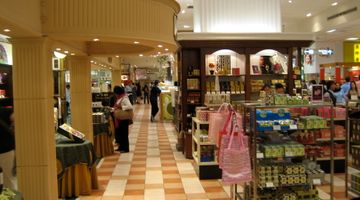Food in Singapore – Best Dishes to Try
Without a doubt, one of the best things about Singapore is the food. Eating and drinking on The Little Red Do are undertaken with much gusto, passion and enjoyment by locals and visitors alike. Singapore’s multicultural roots are evident in the wide variety of Chinese, Malay, Indian, Western and Peranakan specialities and traditional dishes on offer. From street venders to fine-dining restaurants, the food in Singapore is world famous for a reason.
Singapore food culture
When it comes to Singapore food culture, it is evident that the cultural fusion of this multi-lingual, multi-racial and multi-religious society has resulted in a massive variety of culinary options. Eating seems to be the unifying cultural ingredient that binds the diversity of this country, and Foodies the world-over will delight in the diversity of eating options. From traditional Chinese, Malay, Indian and Japanese eateries, Western fast-food chains, street hawkers and food courts, the options are scrumptiously staggering.
A common Chinese greeting, used frequently in Singapore directly translates to, “Have you eaten yet?” This greeting alone should give visitors an idea of the importance placed on food in Singapore. A result of the diversity of different cultures and religions means that the various religions practice different eating practices and follow different food restrictions. It is a common occurrence in Singapore to see those of different cultures dining together peacefully and respecting the culinary practices of other religions and ethnic groups.
The food culture in Singapore is so richly rejoiced and such an avid aspect of daily life and everyday celebration that this foodie paradise hosts a yearly festival dedicated exclusively to all things food related. The Singapore Food Festival is a taste sensation that occurs in June or July and visitors and locals can tantalise their taste buds to their hearts content over a two week period. Local food is on offer with collaboration of local and international chefs, workshops, unforgettable culinary experiences and even food-inspired artworks. This is the perfect means for visitors to experience the local culture, unique traditions and fall in love with Singapore’s food scene and people.
Traditional Singaporean dishes
When travelling around Singapore it is essential to try as many of Singapore’s local delicacies as possible during your trip. Keep your eyes peeled for roti prata which is an Indian inspired, curry-based ‘pizza’ or fried flatbread with cheese, vegetables, meat, and egg. Dessert options of roti prata exist too and are cooked with banana and chocolate.
Considered to be a national favourite is fried kway tiao which is fried flat noodles served with shrimp, sausage, cockles and soy sauce.
Visitors with a sweet tooth will need to work their way through chedol, an iced sweet coconut based dessert with palm sugar syrup; grass jelly, a popular brown or black Asian jelly, pandan cake and the famous kueh, sweet and savoury bite-sized morsels of coconut, tapioca flour and pandan.
Street food in Singapore
With Singapore being an absolute culinary gem, visitors whose budgets do not allow for solely fine dining will be delighted to know that Singapore has a vibrant and lively street food and hawker food scene too.
With the melting pot of cultures all competing for attention, Singapore has seen affordable street food blossom and prosper since the start of this food movement in the 1800’s. Keeping Singapore’s hawker heritage alive is the delicious, traditional dishes on offer from kaya toast to dozens of noodle and rice dishes, curries, rotis and delicious beverages, snacks and desserts. It can be said that everything local on the menu of high-end establishments can be found on offer at Singaporean street venders at a fraction of the price.
Fast food in Singapore
There’s something to be said for the familiarity and comfort that the taste of fast-food can bring when in a foreign country. Fast-food in Singapore is a common sight with the classics such as McDonald’s, Pizza Hut, Dairy Queen and Subway making the usual appearance.
However, Singapore is also known for its unique fast-food options too. Jollibee, a Filipino fast-food chain, Nene Chicken, a beloved South Korean chain, Yoshinoya, a famous Japanese on-the-go eatery and MOS Burger are popular fast-food franchises here in abundance in The Lion City.
Vegetarian and vegan food
For those vegetarian and vegan visitors in Singapore, we’re about to let you in on a wonderful piece of information – Singapore holds second place on Peta’s (People for the Ethical Treatment of Animals) list for the top 10 vegan-friendly cities in Asia.
Thanks to the variety of cultural influences, such as Thai, Western, Indian, Peranakan, Chinese and other local cultures, hungry vegetarians and vegans in Singapore will have no problem at all in locating top-notch scrumptious and healthy veggie grub.
Thankfully many of the local dishes can also be made as meat-free options too. A few well-known vegetarian restaurants are, Joie on Orchard Road, Whole Earth on 76 Peck Seah Street and VeganBurg in Jalan Eunos.
For those looking for raw food, be sure to check out The Living Café on 779 Bukit Timah Road. Famous for their vegan pizza, burgers and desserts, the fast-food joint, nomVnom, in Clarke Quay Central, is also a massive hit with those wanting solely plant-based food.
Halal food in Singapore
Yet another benefit of Singapore’s multicultural population and the peaceful coexistence of a wide variety of divergent religious and backgrounds, is the dizzying abundance of food catering for various dietary restrictions. There is no shortage of Halaal food in Singapore and visitors with this food requirement will have the luxury of choice and convenience throughout their stay. Halaal eateries, outlets and restaurants are scattered on every nook and cranny and visitors can sample a wide variety of local and international cuisine.
Most popular Singaporean dishes to try
Rich in heritage and tradition, there are many famous foods and national dishes from a variety of cultures in Singapore. Singaporean food can be divided into five groups; namely, meat, seafood, noodles, rice and dessert or snacks.
Meat dishes
In the meat category, the most famous dishes would have to be Hainanese chicken rice and bak kut teh (pork bone tea).
Hainanese chicken rice is widely considered as being Singapore’s national dish. Made by boiling chicken meat in water, followed by dunking the meat in an ice bath and then sliced into thin pieces. The chicken is tender with a thin layer of congealed fat and is served with garlic, ginger and fragrant rice.
Bak kut teh on the other hand is essentially a slow-simmered soup made with whole pork ribs and a broth of Chinese herbs, spices and soy sauce. Served mostly as a breakfast meal or on a bed of rice as a delicious lunch or dinner.
Seafood
The seafood group would definitely need to include hard-shell chili or pepper crabs and this popular seafood fare is considered to be a Singapore delicacy. This local dish is especially popular with visitors and is served with a delicious thick tomato-chili sauce and bread.
Another national seafood dish to sample would be the famous barbequed stingray that originated on the streets of Singapore and is most frequently found at hawker stalls. Grilled slowly by being wrapped in a banana leaf and served with a generous helping of chunky sambal (spicy tomato and chili), this unusual dish is a firm favourite amongst locals. Influenced by Indian heritage, fish-head curry is also another popular seafood dish and a favourite food of many Singaporeans.
Noodles
With the dozens of noodle dishes on offer in Singapore it can be difficult for visitors to know where to start. Our recommendation is simply to attempt working your way through them all. However, if you’re undecided, the most famous Singaporean noodle delights are bak chor mee, a thin noodle or flat noodle dish made with minced meat, mostly pork, and a vinegar sauce; fried hokkien mee, fried yellow egg noodles braised in soy sauce and cooked with pork, squid, fish and cabbage; and nonya laksa, a noodle dish originating from Peranakan heritage, made with vermicelli, coconut milk, fish, shrimp and cockles.
Rice
Front row centre in the rice category would have to be nasi lemak. This coconut rice dish is rooted in Malay heritage and culture and is traditionally steamed with coconut cream and wrapped in banana leaves. A classic nasi lemak is served with peanuts, anchovies, egg and sambal.
Biryani, is also a popular rice dish with Indian Muslim influence and frequently eaten in Singapore. This traditional meal is made with long grain rice and an assortment of heavy spices and is often accompanied by a curry or chutney.
Another famous rice meal is duck rice which is exactly what it sounds like – rice with roasted, braised duck.
Snacks and desserts
Finally, the last category of Singapore cuisine would be snacks and dessert. The most famous of all snacks in Singapore is hands down, kaya toast. Kaya is a delicious jam or spread made from coconut, pandan leaves, sugar and eggs and is eaten on toast, pastries and as a sweet filling inside cakes. Singaporeans also enjoy eating kaya toast with half-boiled eggs and a dash of soy sauce.
Another popular dessert is ice kacang and often eaten at the end of a meal. Ice kacang is a mound of grated ice, drizzled generously with a variety of sweet, flavourful syrups with a base made of jelly, corn, red beans and atap seeds.
Singapore sling, anyone?
Singapore’s most famous beverage is without question, the Singapore sling. This cocktail is a combination of gin, cherry brandy mixed with refreshing lashings of orange, lime and pineapple juice. The best Singapore Sling is unanimously said to be made at Raffle’s Hotel Long Bar but visitors will be thrilled to know that this popular beverage can be purchased in bottle form and taken back to one’s own country.
Food prices in Singapore
While food in Singapore is definitely not nearly the cheapest compared to the usual Asian prices, one can still get street food or hawker food at somewhat reasonable prices.
In a food court or hawker centre one can expect to pay around SGD 6 for a decent sized meal whereas fine dining in Singapore can cost anywhere from SGD 40 and up for a meal. Fortunately with food being a primary highlight of Singapore, finding bad food is almost an impossible task no matter what your budget. Even meals prepared from hawker stalls are tasty, generous and cooked in extremely sanitary environments.
Most restaurants, even those who are not advertised as fine dining, are pretty expensive compared to Asia and even the rest of the world, and drinks can be pricey too. However, happy hour specials and the famous hawker stalls can make meal times and hunger pangs more budget friendly and manageable for visitors looking for cheaper dining options.
Food security in Singapore
Although Singapore has a very high dependency on food imports (90% of their food supply is imported), Singapore is considered to be one most food-secure countries on earth. Like all countries, Singapore is vulnerable to instabilities in food supply and prices as well as food safety. With this in mind, Singapore is currently focused on the diversification of food sources from other countries, as well as attempting to try and improve and enhance their own local food production.
Singapore is also well-known for their strict customs control and severe law enforcement, and travellers would do well to check the list of prohibited food items so as not to encounter any trouble at security. Chewing gum is strictly prohibited unless followed with a medical prescription and visitors who disobey this law will be met with heavy fines.
Conclusion
With the vast array of traditional and international meals on offer, all visitors of Singapore should have no difficulty locating their favourite dishes and discovering a world of new ones in the process. Follow your nose, loosen your waistband and attempt working your way through all the flavoursome and delectable morsels on offer. Hit up the local eateries, coffee shops, hawker centres, supermarkets and restaurants generously scattered throughout the island, and with many of them being 24/7, you’ll be able to conquer your hunger pangs the second they strike.































